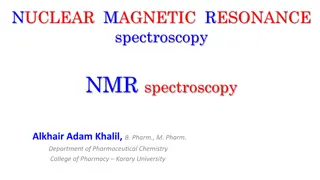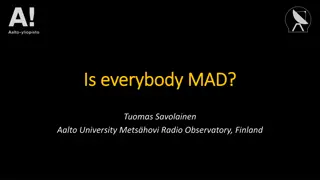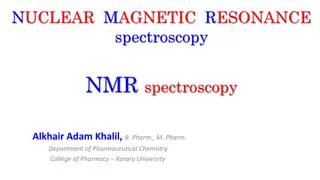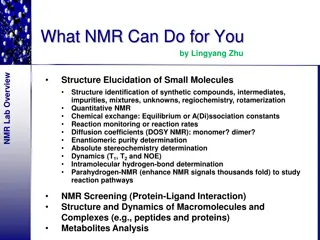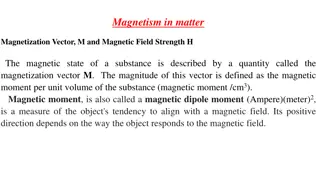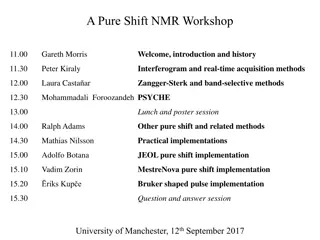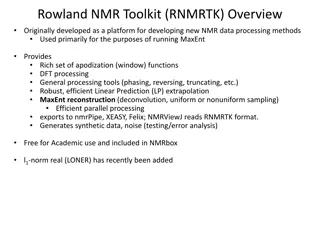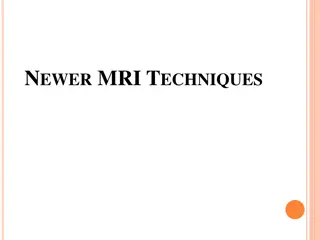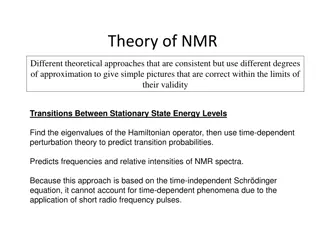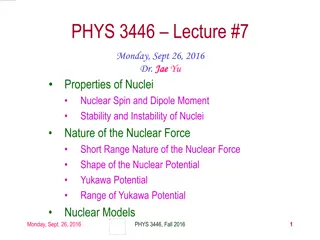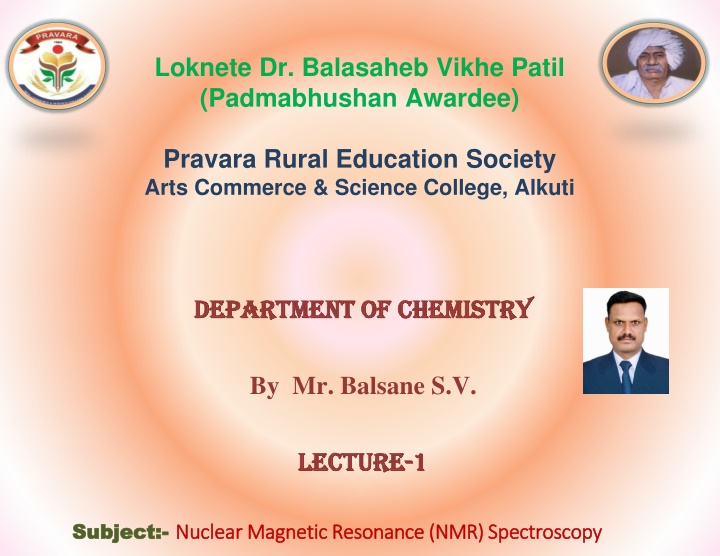
Nuclear Magnetic Resonance (NMR) Spectroscopy in Chemistry
Discover the principles of Nuclear Magnetic Resonance (NMR) Spectroscopy in Chemistry through insights on 1H NMR Spectrum features, chemical shifts, shielding effects, and characteristic shifts relative to TMS. Learn about the impact of electronegativity and alkyl substitution on chemical shifts in NMR analysis.
Download Presentation

Please find below an Image/Link to download the presentation.
The content on the website is provided AS IS for your information and personal use only. It may not be sold, licensed, or shared on other websites without obtaining consent from the author. If you encounter any issues during the download, it is possible that the publisher has removed the file from their server.
You are allowed to download the files provided on this website for personal or commercial use, subject to the condition that they are used lawfully. All files are the property of their respective owners.
The content on the website is provided AS IS for your information and personal use only. It may not be sold, licensed, or shared on other websites without obtaining consent from the author.
E N D
Presentation Transcript
Loknete Dr. Balasaheb Vikhe Patil (Padmabhushan Awardee) Pravara Rural Education Society Arts Commerce & Science College, Alkuti Department of Department of Chemistry Chemistry By Mr. Balsane S.V. Lecture Lecture- -1 1 Subject: Subject:- - Nuclear Nuclear Magnetic Magnetic Resonance Resonance (NMR) (NMR)Spectroscopy Spectroscopy
Structural Information from Features of a 1H NMR Spectrum Position of signals: Indicates what types of hydrogen the molecule contains. Number of signals: Indicates the number of different types of hydrogen in a molecule ( n+1 Rule ). Intensity of signals: Indicates the relative amounts (how many) of each kind of hydrogen in the molecule. Spin-spin splitting of signals: Gives further information of the neighboring environment for the various hydrogens in the molecule.
1H NMR Spectra An NMR spectrum is a plot of the intensity of a peak against its chemical shift, measured in parts per million (ppm).
Shielding and Chemical Shift Protons in a given environment absorb in a predictable region in an NMR spectrum. Two important factors: electronegativity and magnetic anisotropy
Shielding and Chemical Shift The degree of shielding of a nucleus depends upon its surrounding electron density. Adding electrons increases shielding. Removing electrons causes deshielding.
Electronegativity and Chemical Shift The chemical shift of a C H bond increases with increasing alkyl substitution or electronegative atoms attached. RCH2- H RCH2- OH
The absorptions of alkane hydrogens occur at relatively high field. Hydrogens close to an electron withdrawing group (halogen or oxygen) are shifted to relatively lower field (deshielding). The more electronegative the atom, the more the deshielded methyl hydrogens are relative to methane.
The deshielding influenceof electron withdrawing groups diminishes rapidly with distance.
Aromatic Deshielding and Anisotropy In a magnetic field, the six electrons in benzene circulate around the ring creating a ring current. The magnetic field induced by these moving electrons reinforces the applied magnetic field in the vicinity of the protons. The protons thus feel a stronger magnetic field and a higher frequency is needed for resonance meaning they are deshielded and absorb downfield.
Alkyne Chemical Shifts In a magnetic field, the electrons of a carbon-carbon triple bond are induced to circulate, but in this case the induced magnetic field opposes the applied magnetic field (B0). The proton thus feels a weaker magnetic field, so a lower frequency is needed for resonance. The nucleus is shielded and the absorption is upfield.
THANK YOU

